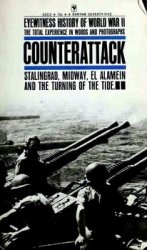1965). With 88% Paraguayan shareholding, LAPSA is formed at Asuncion on September 14, 1960. Two Curtiss C-46s are acquired late in the year and in May 1961, scheduled twice-weekly services are started to Rio de Janeiro via Curitiba and Sao Paulo. An additional Curtiss is added in 1962 and service is maintained through the following year.
In January 1964, the carrier purchases a Lockheed L-049 Constellation in the U. S. for use on a new service to Buenos Aires. While the Rio run continues and appropriate Argentine permissions are sought, carrier pilots obtain the “Connie,” but are unable to get it beyond Campinas, where it loses an engine. Meanwhile, officials in Buenos Aires inform the Paraguayan carrier that it will not receive authority to fly the new aircraft to their city.
Financially overextended through these exertions, the company shuts its doors in 1965. In February 1995, a new company, LAPSA Air Paraguay, S. A., will start up as successor to LAP.
LAPSA AIR PARAGUAY, S. A.: Paraguay (1994-1996). In September 1994, a consortium led by SAETA (Sociedad Anonima Ecuatori-ana de Transportes Aereos, S. A.) purchases from Paraguay 80% control of this reborn national, which will operate jointly with the Ecuadorian airline. Miguel Candia is named managing director and a fleet is assembled at Aeropuerto Internacional at Asuncion. It includes one each Boeing 737-2Q8 and B-737-219A, plus an Airbus Industrie A310-304, all leased from SAETA, plus two Fokker 100s.
Revenue flights commence in February 1995 over a network that will increase by December to the South American destinations of Buenos Aires, Lima, Montevideo, Rio de Janeiro, Santa Cruz de la Sierra, Sao Paulo, and Santiago de Chile, plus Miami.
Although the Florida point had been removed from the company’s route network by FAA’s ban on flights into the U. S. by Paraguyan airlines, LAPSA gets around the prohibition by operating an A320-232 jointly with SAETA.
Although traffic figures are not released, it is noted that an operating profit of $23.6 million is posted for the period from start-up through October.
Two more A320-232s and an A310-304 join the fleet early in 1996. All are leased from or through SAETA. The long-range A310s inaugurate services to Madrid, Brussels, and Frankfurt.
A major stake and management control is acquired in August by TAM (Transportes Aereos Regionais, S. A.) and on September 1 the entire company is sold to the new Brazilian airline holding company, TAM Group, for $27 million. The same day, service between Asuncion and Miami is suspended.
The carrier is now renamed TAM-Mercosur (Transportes Aereos Mercosur, S. A.) in honor of the free trade zone established by Argentina, Brazil, Paraguay, Uruguay, and Chile. TAM President Rolim Adolfo Amaro appoints former VARIG Brazilian Airlines (Viacao Area de Rio Grandense, S. A.) President Rubel Thomas as his deputy director in charge of TAM-Mercosur.
A code-sharing agreement is signed with American Airlines in October. Under its terms, TAM-Mercosur purchases blocked seats on AA’s daily roundtrips from Miami to Asuncion. Plans are made to lease a fleet of 10 Fokker 100s from TAM.
LAR ROMANIAN AIRLINES (LINILILE AERIENE ROMANE): Romania (1975-1996). LAR Romanian is organized at Bucharest in 1975 as the charter subsidiary of TAROM (Transporturile Aeriene Romane, S. A.). Employing 3 BAC 1-11-424s, Managing Director C. Radut’s carrier inaugurates unscheduled and inclusive-tour flights in December to holiday destinations in North Africa, Europe, and the Middle East. These operations are continued with little change for the remainder of the decade and throughout the 1980s. In 1990, the fleet comprises 3 Antonov An-26s and 1 BAC 1-11-424.
Following the fall of the Communist government, the company is reformed on February 19, 1991 as a joint stock company, one-third of which is owned by the new Romanian government. Dorin Ivascu is named general director and a workforce of 61 is recruited. Charter services are resumed with a new fleet, which includes 2 An-24Vs, 1 of the previously owned An-26s, 1 Ilyushin Il-18D, and 2 BAC 1-11-424s leased from TAROM.
The recession causes a significant cutback in operations during 1992-1994 and only two An-26s are flown. Flights continue in 1995, during which year two American-made Beech 1900Ds replace the Antonovs. Destinations visited include Izmir, Skopje, Zagreb, and Tirana. Unable to maintain economic viability, the company shuts down in 1996.
LAR TRANSREGIONAL, S. A. (LIGACOES AEREAS REGION-ALS): Portugal (1986-1997). Founded at Aeroporto de Lisboa in 1986, Portugal’s new domestic operator is organized as a subsidiary of TAP-Air Portugal, which owns a 30% interest, under the name Ligacoes Aereas Regionals, S. A. (LAR). The carrier is initially equipped with 1 Beech King Air 90 and 3 de Havilland Canada DHC-6 Twin Otters. These are employed to inaugurate scheduled passenger and cargo air bridge services linking the capital with Faro and Oporto.
In 1988-1989, Managing Director Alberto Aragao’s fleet is altered; gone are the Canadian turboprops, replaced by three British Aerospace BAe (HS) 748-B2s and two Dornier 228-202Ks. These provide twice-daily service to Faro and eight-times-per-day roundtrips to Oporto. In addition, first time flights are inaugurated from Oporto to Braganca and
Vila Real and from Lisbon to Covilha. Enplanements during the latter year total 300,000.
Two DHC-6-300s join the fleet in 1990, along with three leased BAe ATPs and another Dornier 228-202K. International services are begun in 1991 from Lisbon and Oporto to Bilbao, Bordeaux, Compostela, Malaga, Santiago, and Seville. The marketing title is now changed to LAR Transregional, S. A.
President Armando Moreira’s fleet in 1992 includes 2 BAe ATPs, 3 BAe (HS) 748-B2s, 2 Dornier 228-202Ks, and 2 Twin Otters. In the spring, the ATPs are grounded and replaced by a pair of BAe 146-200s, the company’s first jet equipment. These are employed during the summer to offer new or enhanced scheduled services over routes from Lisbon to Seville, Malaga, Bilbao, Genova, Las Palmas, and Port-Bordeau.
Unsuccessful, the British jetliners are withdrawn in early 1993 and the ATPs, upon which no lease payments have been made in some time, are returned to their owners, the Canadian Imperial Bank of Commerce. CEO Rogelio Rodrigues’ fleet now includes 3 Dornier 228-202Ks. A de Havilland Canada DHC-6-100 Twin Otter is leased in 1994 and plans are made to charter a pair of Boeing 737-200s.
The Boeings are not acquired and one Dornier is removed from service in 1995. Operations continue apace in 1996. During both years, the carrier suffers from poor traffic, the accumulation of debt, and an inability to identify a strategy that will ensure survival. As a result, the carrier is forced to shut its doors at the beginning of 1997.
LARADO AIR: United States (1989-1990). Wolf Holman organizes Larado Air at the Texas city of that name in 1989 to offer scheduled services to the state’s larger communities with a pair of Convair CV-440s. Daily roundtrip passenger and cargo flights commence in April, linking the company’s base with San Antonio, Dallas, and Monterrey, Mexico.
Unable to attract sufficient traffic, the company abandons its scheduled work and begins flying charters in early 1990. The failed enterprise is sold for its equipment later in the year.




 World History
World History









